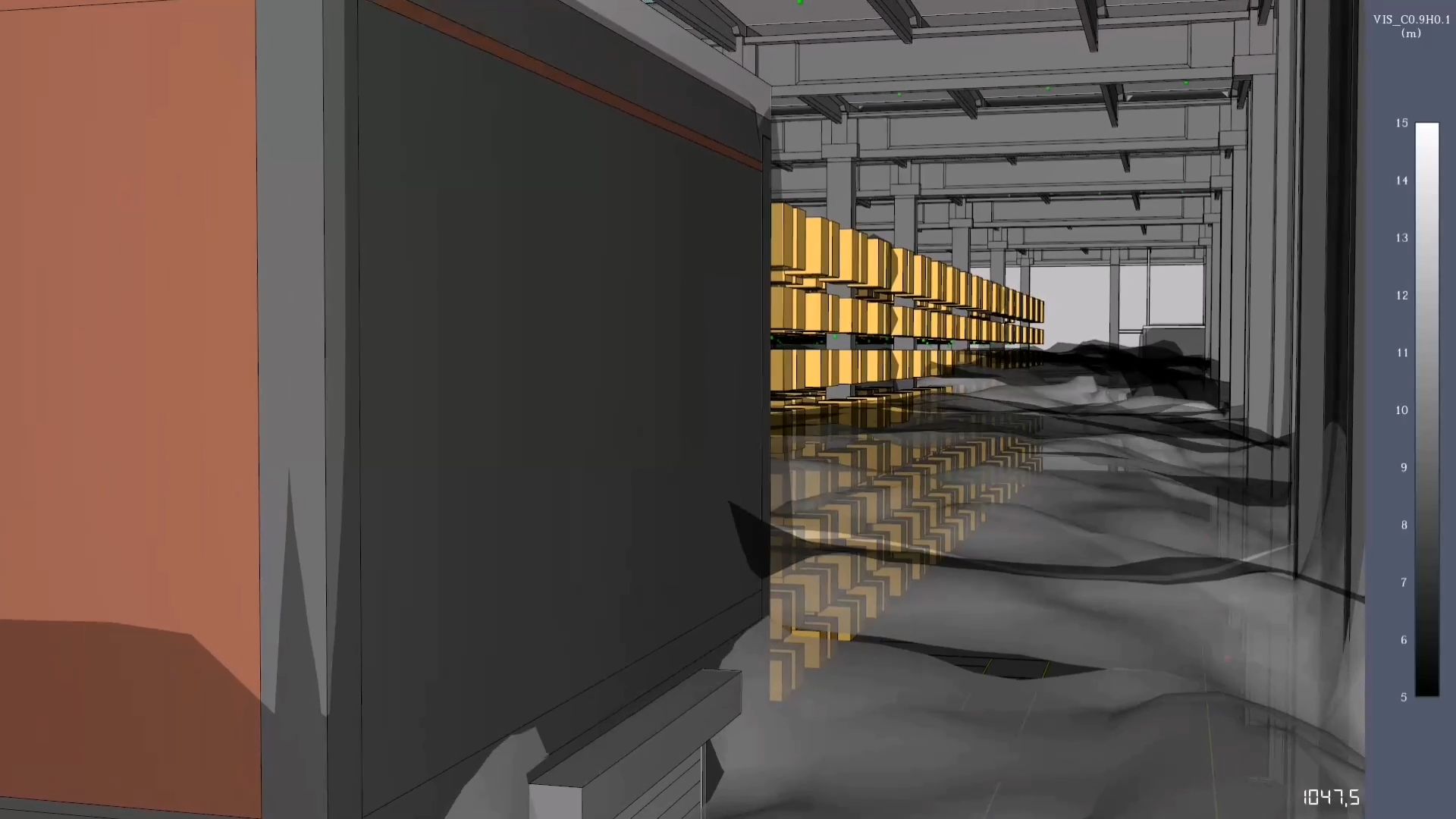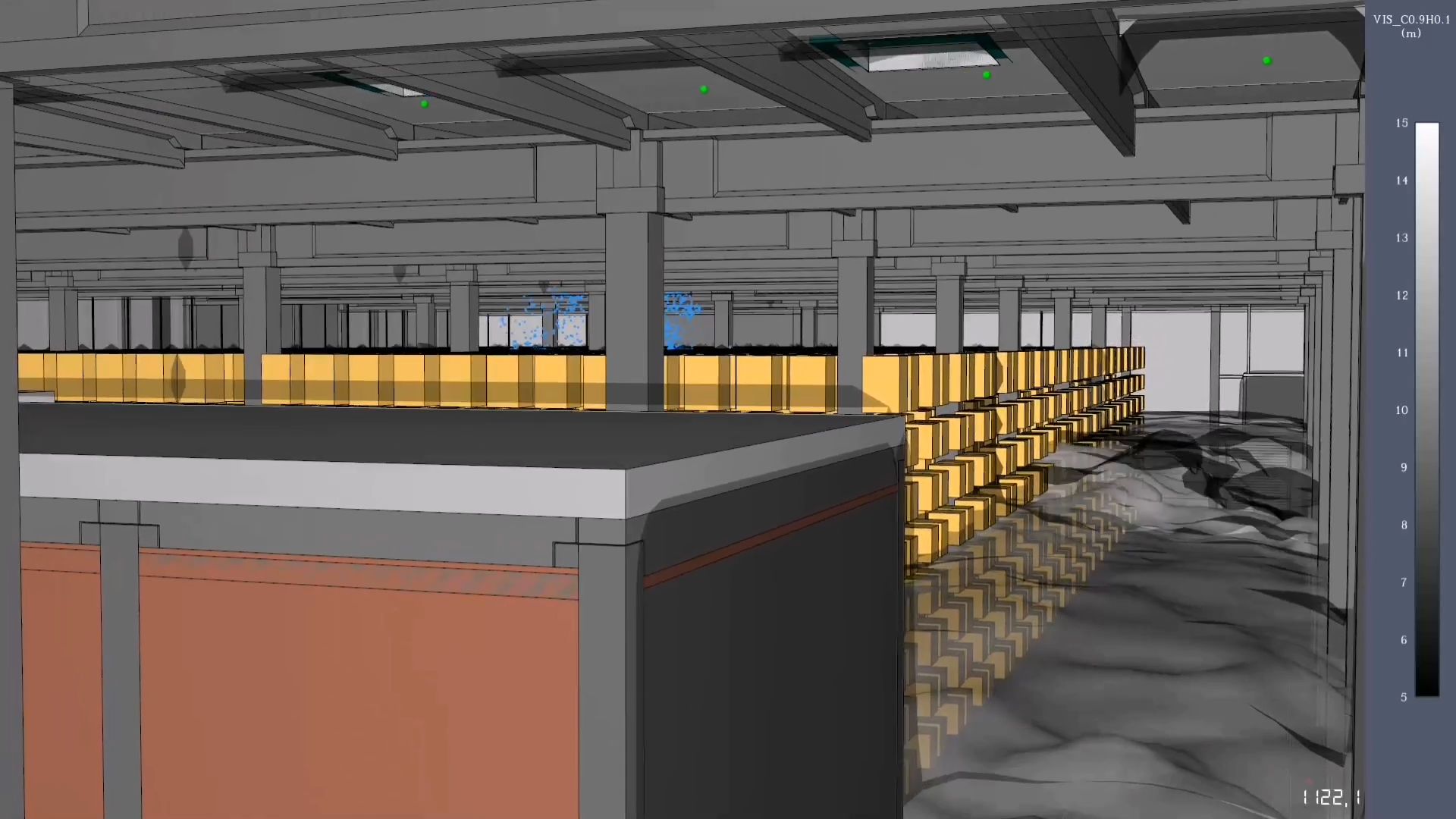Blog
IN-EX: in-house key disciplines – The simulation of heat and smoke propagation
Today, the issue of ensuring a cost-effective energy supply, especially for industrial buildings that are used for production, is becoming much more important than ever before.


Today, the issue of ensuring a cost-effective energy supply, especially for industrial buildings that are used for production, is becoming much more important than ever before.
One possible answer is to add solar panels to the electricity grid, but to achieve significant energy savings requires the installation of a significant amount of equipment, requiring a significant amount of space. An obvious solution may be to cover the roof with solar panels, but in addition to the numerous mechanical devices on the roof, the installation of these panels may also be complicated by the heat and smoke extraction domes, which are inevitable from the perspective of fire safety.
The National Fire Safety Code and the relevant Technical Guidelines for Fire Safety specify the exact effective opening areas required, but if we can simulate that the heat and smoke extraction is effective even at smaller sizes, the opening areas, and thus the number of domes, can be reduced by half. During the simulation, fires with high smoke development potential are set in the most unfavourable locations for intervention, and then it is checked whether the firefighting intervention conditions are met, taking into account the spreading and the opening times. This can be seen in the video below.
If it can be demonstrated to the authority that no temperatures are generated that would endanger the people trying to escape or would cause the ignition of additional materials, and no smoke concentrations are generated that would prevent firefighters from being able to approach the fire, there is no obstacle to the use of reduced surfaces. Thanks to the professionalism of our colleagues and our state-of-the-art IT tools, we can now carry out these tests in-house.
Recent posts
Final exams at the BME
Thanks to the Faculty of Civil Engineering, Zsolt Oláh was invited to be an external committee member for the MSc in Building Information Engineering to review the students' theses and attend their final exams.
Hydro Extrusion’s solutions: heat dissipation
By Hydro's aluminium foundry project presented us with an unusual design challenge. We have strong acoustic requirements to protect the neighbourhood, and that the furnaces generate a lot of heat, which we had to dissipate while minimising noise.
Hydro Extrusion’s solutions for the support structure
In our previous posts, we introduced you to our Hydro project and the design of the casting pits that form the backbone of the technology. This time we present some exciting solutions for the support structure.
Engineering and what lies behind it
A special career orientation day has allowed students at Petőfi Sándor Gimnázium to get a glimpse of a career in engineering.
Visiting a factory building site at the beginning of your professional career
The construction of several buildings of our Nyíregyháza-based project is at such a stage that the electrical team, together with the BMS team, decided it would be worth taking a look at the work in progress.
We support the career choices of future engineers!
Since autumn 2024, our company has been an active member of the association "Together for Future Engineers" (EJMSZ).

